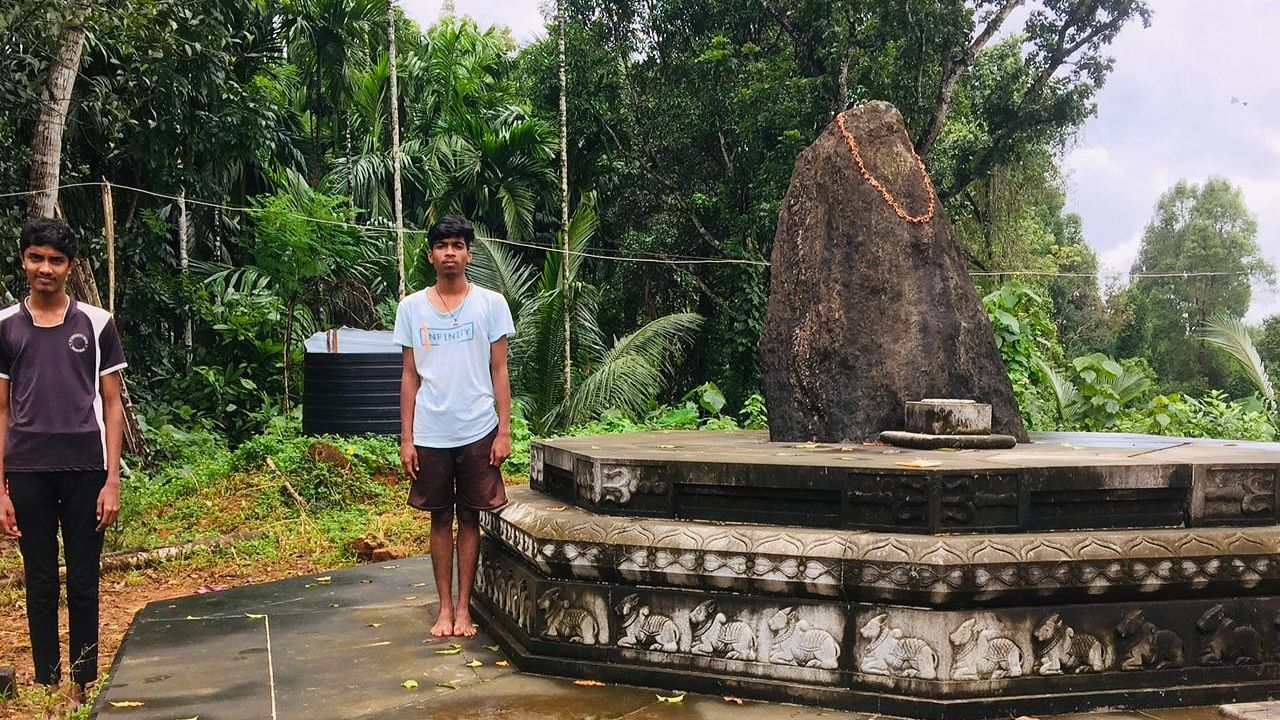
A Menhir of the Megalithic era has been discovered at Nintikallu in Murulya village of Sullia taluk of Dakshina Kannada district.
The Menhir is said to be the first of its kind discovered in Dakshina Kannada, said Prof Murugeshi T, Associate Professor, Department of Ancient History and Archaeology, MSRS College, Shirva.
He said megalithic culture is predominantly represented by different types of burials in coastal Karnataka. The one discovered at Nintikallu is about 10 feet in height. It was located on the life side of Dayananda Gowda’s house in the open courtyard. The lower half of the Menhir was buried in the recently-built round concrete platform which is now called ‘Vanadurga Katte’. At present, a female deity is worshipped here, he said.
“Menhirs are known by various names like Nilskal, Nintikal, Anekallu, Rakkasakal, Garbinikal and so on in South India. At Basruru, Nitturu and Subhasnagara of Udupi district, they are peculiarly known as Garbiniyara Kallu. It is a free-standing stone, slightly leaning towards the north-west direction. The discovered Menhir closely resembles the Menhir found at Siddalingapura in Kodagu and Nilskal in Shivamogga,” said Prof Murugeshi.
Dayananda Gowda, a local resident whose house is nearby, told the team that they had found thick red potteries while digging the site for the construction work. The pottery confirms that the place has Megalithic connections, he added.
“It is clear that the place Nintikallu got its name from this Menhir as we have seen in the case of Nilskal. Nilskal in Hosanagara taluk of the Shivamogga district also got its name from the number of huge upright standing stones,” he said.
Prof Murugeshi has thanked Dayananda Gowda Nintikallu, Nischith Golitadi, Shreyas Kolape, Vivek Master Udupi Bailur and his students Pratheeka, Arun, Dishanth and Vishal Rai Puttur for their support in the discovery.